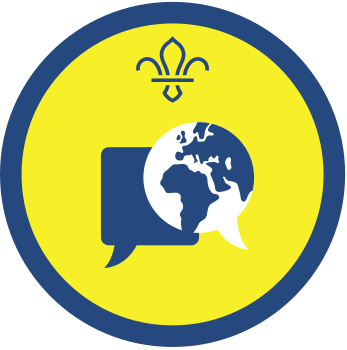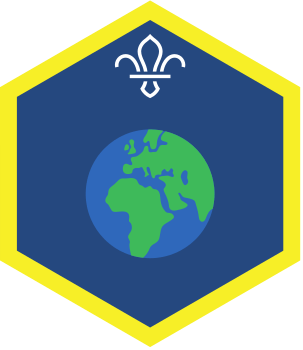
Clean confetti
You’ll need
- Multi-coloured confetti (including some blue pieces)
- Paper cups (two for each team)
To watch in full screen, double click the video
Before you begin
- Create a river of multi-coloured confetti at one end of your meeting place. Pour the confetti straight onto the floor in a long, curved, shape.
Talk about water
- Everyone should talk about the ways they use water on a daily basis. How do you use it when you’re getting ready in the morning? What about at school or work? What about at dinner time?
- The person leading the game should explain that millions of people live without access to clean water. In some places, children have to collect water for their families; this can mean walking long distances up to four times a day, and that children can’t go to school.
- Everyone should talk about what may make water unclean. Lots of different things can pollute water, for example, oil, sewage, pesticides, plastic, rubbish, or chemicals from factories.
Get ready to play
- Split into small teams that are roughly the same size. Give each team two cups.
- Each team should line up on the other side of the room to the river, facing the river.
- The river is full of water (the blue pieces of confetti), but it’s unclean. The other colours of confetti represent all of the pollutants people talked about earlier.
- The person at the front of each line should put one of the cups on the floor. This is their team’s home cup, which will hold all the water they collect.
Collect the confetti
- The first person in each line should take the other cup (the collection cup), and run to the river.
- When they reach the river, they should collect as many blue pieces of confetti as they can, putting them in their collection cup. They shouldn’t pick up any other colours of confetti. Once a piece of confetti is in the collection cup it can’t be taken out again.
- The person leading the game should time ten seconds. Once ten seconds is up, the player should run back to their team and transfer everything from the collection cup to the home cup. Once a piece of confetti is in the home cup, it can’t be taken out again.
- Everyone should repeat steps one to three, until everyone in the smallest team has had a turn.
- Once everyone’s had a turn, everyone should get back into a big circle.
- Everyone should count the pieces of confetti in their home cup. Blue pieces are worth one point. Teams lose one point for each piece of other coloured confetti, because these are the pollutants that make the water unclean.
- The winning team is the one with the most points, after their clean water’s been counted and any points have been taken off for any pollutants.
- Now it’s time to reflect on what it means to be a citizen in a world where not everyone has access to clean water, and what it means to respect people who have different backgrounds to us. We’ve included some questions below to get you started.
- 844 million people don’t have clean water close to home.
- 3 billion people don’t have a decent toilet of their own.
- 31% of schools don’t have clean water.
- A newborn baby dies from an infection caused by lack of safe water and an unclean environment every minute.
- Diarrhoea caused by dirty water and poor toilets kills a child under five every two minutes.
- Around the world up to 443 million school days are lost every year because of water-related illnesses.
- The average distance that women in Africa and Asia walk to collect water is six kilometres.
- In Sub-Saharan African, women and girls spend 40 billion hours a year collecting water. This is the same amount of time as a year’s worth of work by the entire workforce of France.
- Many girls’ school attendance is impacted by them having to spend their mornings walking long distances to collect water.
- Children will typically carry containers of water on their heads – these weigh up to four and a half kilograms. The containers teenagers carry can weigh up to twenty kilograms.
Sources: 1: World Health Organisation and UNICEF, 2017. 2: World Health Organisation and UNICEF, 2017. 3: World Health Organisation and UNICEF, 2018. 4: World Health Organisation, 2015. 5: WASHWATCH.org. 6: Human Development Report, 2006. 7: Office of the United Nations High Commissioner for Human Rights, 2010. 8: UN Women, 2014. 9: The World Bank, 2013. 10: Milken Institute School of Public Health, 2016.
Reflection
This game reminded you to respect people with different backgrounds to you. How do you think it feels to be someone who doesn’t have access to clean water, who may have to work hard to collect unclean water?
What things do you think may happen because people don’t have access to clean water (for example, they may get poorly, miss school, not be able to keep themselves clean)?
Was it difficult to separate out the blue confetti from the pollutants? How difficult would your life be if you didn’t have access to clean water?
What does it mean to you to show respect to people who don’t have access to clean water, even though you won’t always meet them? Could you try to be sensible with your own water use or raise awareness of the issue?
This game also reminded you that you’re a local, national, and international citizen. Part of being an international citizen is knowing that everyone, no matter where they live, has rights.
Does everyone have the right to clean water? How do you feel knowing that some people still aren’t able to access clean water?
In real life, there are some ways to clean and filter water, like a water filter system (boiling doesn’t remove everything, and water purification tablets are expensive).
As international citizens, we have responsibilities to other people across the world. Do you have a responsibility to help people who don’t have access to water? How could you help them (for example, raising awareness, working with WaterAid)?
Safety
All activities must be safely managed. You must complete a thorough risk assessment and take appropriate steps to reduce risk. Use the safety checklist to help you plan and risk assess your activity. Always get approval for the activity, and have suitable supervision and an InTouch process.
- Active games
The game area should be free of hazards. Explain the rules of the game clearly and have a clear way to communicate that the game must stop when needed. Take a look at our guidance on running active games safely.
- The players could make their own confetti from scrap paper, before making their own river.
- Change the length of time people have to collect confetti, or change the size of teams, to vary the challenge.
- Change the point value of the clean water or the confetti to suit your players. Do pollutants need to cause more or less damage than one point?
- If anyone finds it difficult to tell the difference between colours, use two colours they can tell the difference between (for example, white and black), or use paper with different patterns on.
- If anyone’s unable to bend down and reach the floor (for example, because they use a wheelchair), make the river on a table.
- You don’t have to ask people to run to the river – everyone should move in a way that’s accessible for everyone. Teams could stand close to the table, and people could take it in turns to sort the confetti.
All Scout activities should be inclusive and accessible.
You could use this activity to introduce the Community Impact Staged Activity Badge, and some of the different issues or themes you might want to focus your impact project on.

